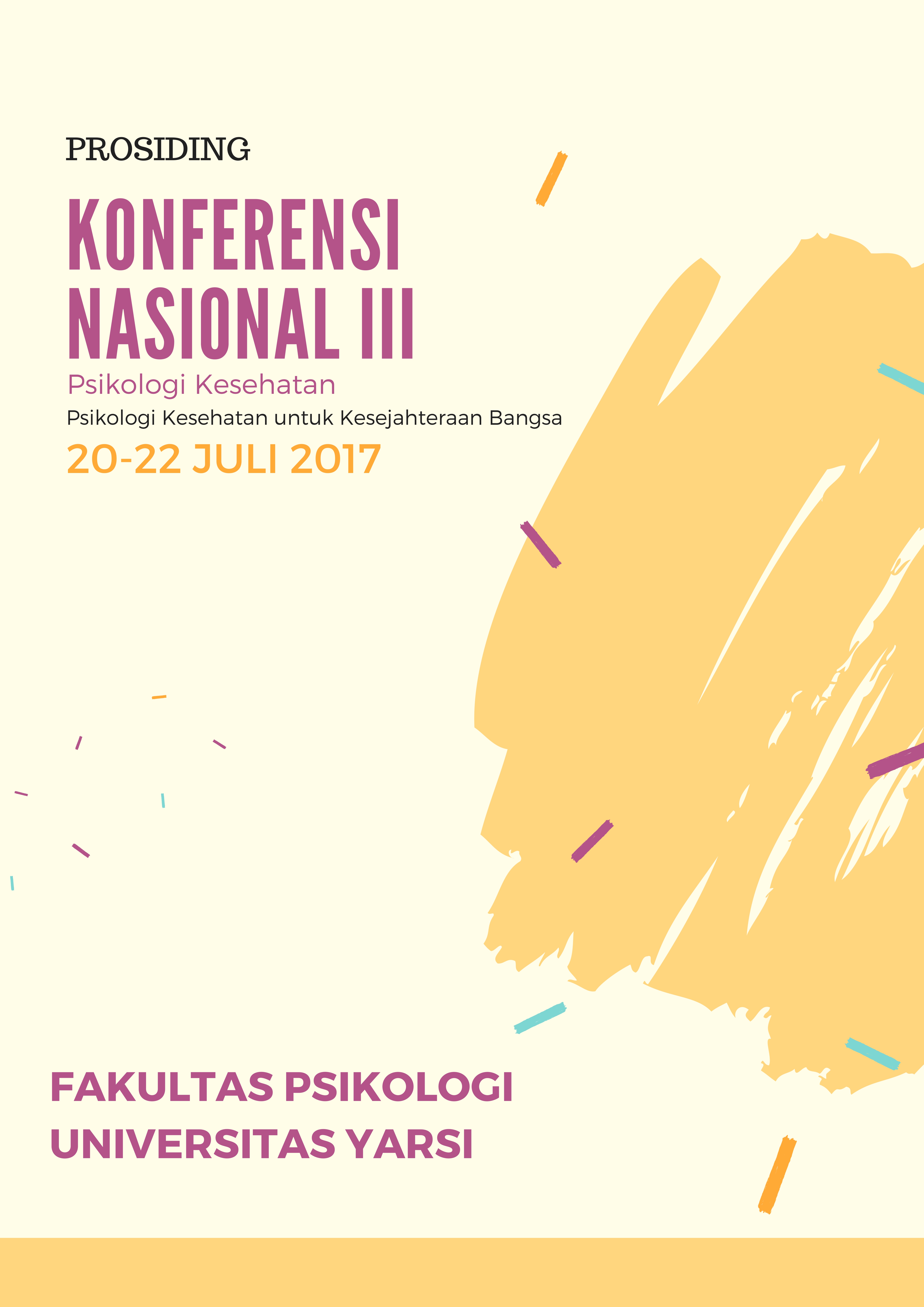BRAINSPOTTING SEBAGAI TERAPI SISTEM LIMBIK UNTUK MEMULIHKAN TRAUMA
Kata Kunci:
Brainspotting, trauma, sistem limbikAbstrak
Trauma adalah kondisi stres ekstrem yang terjadi akibat pengalaman traumatis. Ketika reaksi traumatis terjadi, seseorang berada dalam kondisi survival dan bagian otak rasionalnya menjadi tidak aktif. Selain itu, trauma (reaksi traumatis) berasal dari bagian otak emosi yang sedikit berkaitan dengan otak rasional. Hal ini membuat terapi bicara menjadi terbatas dalam penanganan trauma dikarenakan menurunnya kemampuan berpikir rasional dan sulitnya kata-kata (terapi verbal) mempengaruhi otak emosi. Untuk mengubah reaksi traumatis tersebut, suatu intervensi perlu mengakses otak emosi dan melakukan terapi sistem limbik, yaitu memperbaiki kesalahan sistem alarm dan memulihkan otak emosional. Cara untuk mengakses otak emosional secara sadar adalah melalui self awareness, yaitu dengan mengamati pengalaman internal (pikiran dan tubuh). Brainspotting merupakan terapi yang memanfaatkan fiksasi mata dan observasi pada pengalaman internal untuk mengakses kemampuan self healing otak dalam mencari akar masalah pada tubuh dan pikiran lalu menyembuhkannya. Tulisan ini akan membahas bagaimana Brainspotting mengakses otak emosi serta mengubah reaksi traumatis dan memulihkan kembali fungsi otak emosi.
Referensi
Akirav, I., & Maroun, M. (2007). The role of the medial prefrontal cortex-amygdala circuit in stress effects on the extinction of fear. Neural Plasticity, 2007 (30873). doi: 10.1155/2007/30873.
Bremner, J.D. (2007). Neuroimaging in Posttraumatic Stress Disorder and Other Stress related Disorders. Neuroimaging Clinincs of North America, 17(4), 523–ix. doi:10.1016/j.nic.2007.07.003.
Corrigan, F., & Grand, D. (2013). Brainspotting: Recruiting the midbrain for accessing and healing sensorimotor memories of traumatic activation. Medical Hypotheses, 80(6), 759-766. http://dx.doi.org/10.1016/j.mehy.2013.03.005.
Cozolino, L. (2010). The neuroscience of psychotherapy: Healing the social brain. 2nd. New York: W. W. Norton.
Craig, A. D. (2002). How do you feel? Interoception: the sense of the physiological condition of the body. Nature Reviews Neuroscience. 3, 655–666. doi: 10.1016/S0959-4388(03)00090-4.
Grand, D. (2013). Brainspotting. Louisville: Soundstrue.
Grand, D. (2015). Advanced theory about allocortex capacity to regulate itself [Video file]. Diakses dari https://www.youtube.com/watch?v=_s5EczulnKs.
Holzel., B.K. dkk. (2010). Mindfulness practice leads to increases in regional brain gray matter density. Psychiatry Research: Neuroimaging, 191 (2011), 36–43. doi:10.1016/j.pscychresns.2010.08.006
Maroun, M. (2013). Medial prefrontal cortex: Multiple roles in fear and extinction. The Neuroscientist, 19 (4), 370-383. doi: https://doi.org/10.1177/1073858412464527.
Rothschild, B. (2000). The body remembers: The psychophysiology of trauma and trauma treatment. New York: W.W. Norton.
Salvador, M. C. (2013). The wisdom of the subcortical brain. International Journal of Integrative Psychotherapy, 4 (2). Diakses dari http://www.integrative-journal.com/index.php/ijip/article/view/89.
Sawyer, S. (2016). An intimate meeting of neuroscience and cutting-edge psychotherapy: dr. stephen porges & dr david grand. Diakses dari http://rockymountainbrainspottinginstitute.com/an-intimate-meeting-of-neuroscience-and-cutting-edge-psychotherapy-dr-stephen-porges-dr-david-grand.
Scaer, R. (2012). 8 keys to brain–body balance. New York: W.W. Norton.
Scaer, R. (2014). The body bears the burden: trauma, dissociation, and disease. New York: Routledge.
Schulz, A., & Vögele, C. (2015). Interoception and stress. Frontiers in Psychology, 6 (993). doi: 10.3389/fpsyg.2015.00993.
Siegel, D. (2007). The mindful brain : The neurobiology of well-being. Louisville: Soundstrue.
Teper, R., Segal, Z.V., Inzlicht, M. (2013). Inside the mindful mind: How mindfulness enhances emotion regulation through improvements in executive control. Current Directions in Psychological Science, 22 (6), 449-454.
Van Boven dkk. (2009). Advances in neuroimaging of traumatic brain injury and posttraumatic stress disorder. Journal of Rehabilitation Research & Development, 46 (6), 717–756.
Unduhan
Diterbitkan
Terbitan
Bagian
Lisensi
Hak Cipta (c) 2025 M. Ari Wibowo

Artikel ini berlisensiCreative Commons Attribution-NonCommercial-ShareAlike 4.0 International License.

 M. Ari Wibowo
M. Ari Wibowo
 ESA Consulting
ESA Consulting



